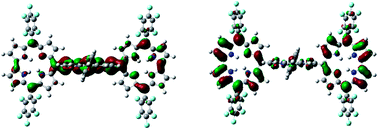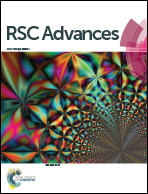A new meso–meso directly-linked corrole–porphyrin–corrole hybrid: synthesis and photophysical properties†
Abstract
A first example of a directly-linked corrole–porphyrin–corrole (Cor–Por–Cor) triad has been targeted and synthesized. The new hybrid has been fully characterized by 1H NMR, 19F NMR and 2D NMR spectroscopy. The fluorescence quantum yield of the triad is three times higher than that of meso–meso directly linked porphyrin trimers. All the three chromophores assume a near orthogonal geometry with respect to the neighbour.


 Please wait while we load your content...
Please wait while we load your content...